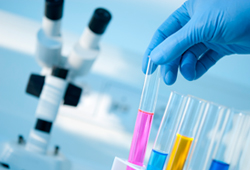Draft Implementing Rules of China’s Human Genetic Resources Regulations as Applied to Foreign Persons
 The Administrative Regulations of the People’s Republic of China on Human Genetic Resources (the “Regulations”), promulgated by China’s State Council, have been in effect for almost three years. As the administrative department under the State Council with the primary responsibility for the administration and enforcement of the Regulations, China’s Ministry of Science and Technology (“MOST”) is also responsible for promulgating rules implementing the Regulations. On March 21, 2022, MOST published Draft Implementing Rules for the Regulations (the “Draft Rules”) for public comment, which must be submitted to MOST by April 21, 2022.
The Administrative Regulations of the People’s Republic of China on Human Genetic Resources (the “Regulations”), promulgated by China’s State Council, have been in effect for almost three years. As the administrative department under the State Council with the primary responsibility for the administration and enforcement of the Regulations, China’s Ministry of Science and Technology (“MOST”) is also responsible for promulgating rules implementing the Regulations. On March 21, 2022, MOST published Draft Implementing Rules for the Regulations (the “Draft Rules”) for public comment, which must be submitted to MOST by April 21, 2022.
This article is not a comprehensive review of the Draft Rules, but rather focuses on those provisions of the Draft Rules that are specifically related to “foreign organizations and individuals and the entities formed or actually controlled by them” under the Regulations (collectively, “Foreign Persons”), with the exception of the first part on the definition of “human genetic resources information.”
Read the client alert.
 On July 1, 2019, the Administrative Regulations on Human Genetic Resources (人类遗传资源管理条例) (the “Regulations”) issued by the State Council of the People’s Republic of China (the “PRC”) came into effect. On October 17, 2020, the Standing Committee of the PRC National People’s Congress promulgated the Biosecurity Law (中华人民共和国生物安全法) (the “Biosecurity Law”), which came into effect as of April 15, 2021. Having replaced its predecessor, the Interim Measures for the Administration of HGR (人类遗传资源管理暂行办法), the Regulations now form the basis of PRC’s regime on its human genetic resources, and govern the collection, preservation, use, and external provision of human genetic resources abroad. The Biosecurity Law further reinforces the Regulations by asserting PRC’s sovereignty over its human genetic resources and re-iterating certain key provisions under the Regulations.
On July 1, 2019, the Administrative Regulations on Human Genetic Resources (人类遗传资源管理条例) (the “Regulations”) issued by the State Council of the People’s Republic of China (the “PRC”) came into effect. On October 17, 2020, the Standing Committee of the PRC National People’s Congress promulgated the Biosecurity Law (中华人民共和国生物安全法) (the “Biosecurity Law”), which came into effect as of April 15, 2021. Having replaced its predecessor, the Interim Measures for the Administration of HGR (人类遗传资源管理暂行办法), the Regulations now form the basis of PRC’s regime on its human genetic resources, and govern the collection, preservation, use, and external provision of human genetic resources abroad. The Biosecurity Law further reinforces the Regulations by asserting PRC’s sovereignty over its human genetic resources and re-iterating certain key provisions under the Regulations. In response to the outbreak of a pneumonia-like disease caused by coronavirus (COVID-19), Chinese regulatory authorities adopted a few emergency measures under certain “Special Review and Approval Procedures” to fast-track the review and approval process for developing diagnostic kits, vaccines and therapies for combating COVID-19 infections. There are several types of “fast track” procedures available under the current Chinese regulatory framework. The most important three are Special Review and Approval Procedure of 2005, Special Review and Approval Procedure of 2007, and Priority Review and Approval Procedure of 2017, all of which are summarized in this alert.
In response to the outbreak of a pneumonia-like disease caused by coronavirus (COVID-19), Chinese regulatory authorities adopted a few emergency measures under certain “Special Review and Approval Procedures” to fast-track the review and approval process for developing diagnostic kits, vaccines and therapies for combating COVID-19 infections. There are several types of “fast track” procedures available under the current Chinese regulatory framework. The most important three are Special Review and Approval Procedure of 2005, Special Review and Approval Procedure of 2007, and Priority Review and Approval Procedure of 2017, all of which are summarized in this alert.